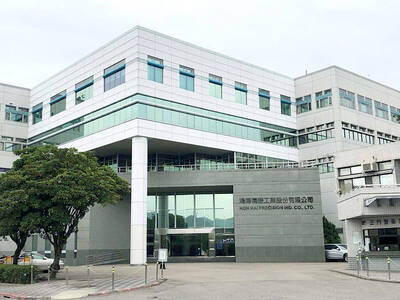China Steel Corp (中鋼), the nation’s largest steelmaker, yesterday said it would be keeping steel prices for delivery next month steady as customers have accumulated inventory after global supply chain blockage suspended production.
The Kaohsiung-based company urged Taiwanese steel-using companies to take advantage of the lower steel prices to prepare for Environmental Social Governance (ESG) challenges it sees coming down the line for related industries.
“We hope that our downstream buyers can take full advantage of this period of price stability in steel to accelerate their ESG transition efforts and be prepared for the worldwide trend in decarbonization,” China Steel said in a statement.
The company also said it plans to reduce carbon emissions from 2018 levels by 7 percent by 2025, and to be completely carbon neutral by 2050.
“We will be following the lead of Tata Steel Europe and Germany’s Thyssenkrupp Steel in adding a carbon surcharge,” the company said.
China Steel said that several factors are indicating a rebound in Asian steel prices in the fourth quarter, including a rise in demand due to a global economic recovery as well as a surge in raw material costs.
“The strict ‘dual-control’ electricity use policy mandated that many steelmakers in China can only run during off-peak hours from November 15 to March 15, 2022,” the company said.
“We predict that crude steel production will decrease by at least 30 percent,” it added.
In addition to predicting tighter supplies due to electricity shortages, the company said that the price of coking coal has broken US$400 per tonne, while iron ore, which hit bottom last month, has risen by nearly 40 percent.
“Given the tightness in supply of various steel smelting materials and the Baltic Dry Index has reached a 13-year high, we expect Asian steel prices to rebound,” China Steel said.
The Baltic Dry Index is a bellwether index for global dry bulk shipping, which has surged alongside demand for coal imports amid a global energy crunch.
Global and domestic demand for steel is expected to be strong, said the state-run company, which has a committee decide the price of steel for domestic delivery, monthly for some products and quarterly for others.
The World Steel Association predicted that “the demand for global steel will grow by 4.5 percent year-on-year to 1.86 billion tonnes, and that a further 2.2 percent growth year-on-year is expected in 2022,” China Steel said, adding that it expects a bullish steel market until next year.

Shares in Taiwan closed at a new high yesterday, the first trading day of the new year, as contract chipmaker Taiwan Semiconductor Manufacturing Co (TSMC, 台積電) continued to break records amid an artificial intelligence (AI) boom, dealers said. The TAIEX closed up 386.21 points, or 1.33 percent, at 29,349.81, with turnover totaling NT$648.844 billion (US$20.65 billion). “Judging from a stronger Taiwan dollar against the US dollar, I think foreign institutional investors returned from the holidays and brought funds into the local market,” Concord Securities Co (康和證券) analyst Kerry Huang (黃志祺) said. “Foreign investors just rebuilt their positions with TSMC as their top target,

H200 CHIPS: A source said that Nvidia has asked the Taiwanese company to begin production of additional chips and work is expected to start in the second quarter Nvidia Corp is scrambling to meet demand for its H200 artificial intelligence (AI) chips from Chinese technology companies and has approached contract manufacturer Taiwan Semiconductor Manufacturing Co (TSMC, 台積電) to ramp up production, sources said. Chinese technology companies have placed orders for more than 2 million H200 chips for this year, while Nvidia holds just 700,000 units in stock, two of the people said. The exact additional volume Nvidia intends to order from TSMC remains unclear, they said. A third source said that Nvidia has asked TSMC to begin production of the additional chips and work is expected to start in the second

REVENUE PERFORMANCE: Cloud and network products, and electronic components saw strong increases, while smart consumer electronics and computing products fell Hon Hai Precision Industry Co (鴻海精密) yesterday posted 26.51 percent quarterly growth in revenue for last quarter to NT$2.6 trillion (US$82.44 billion), the strongest on record for the period and above expectations, but the company forecast a slight revenue dip this quarter due to seasonal factors. On an annual basis, revenue last quarter grew 22.07 percent, the company said. Analysts on average estimated about NT$2.4 trillion increase. Hon Hai, which assembles servers for Nvidia Corp and iPhones for Apple Inc, is expanding its capacity in the US, adding artificial intelligence (AI) server production in Wisconsin and Texas, where it operates established campuses. This

US President Donald Trump on Friday blocked US photonics firm HieFo Corp’s US$3 million acquisition of assets in New Jersey-based aerospace and defense specialist Emcore Corp, citing national security and China-related concerns. In an order released by the White House, Trump said HieFo was “controlled by a citizen of the People’s Republic of China” and that its 2024 acquisition of Emcore’s businesses led the US president to believe that it might “take action that threatens to impair the national security of the United States.” The order did not name the person or detail Trump’s concerns. “The Transaction is hereby prohibited,”